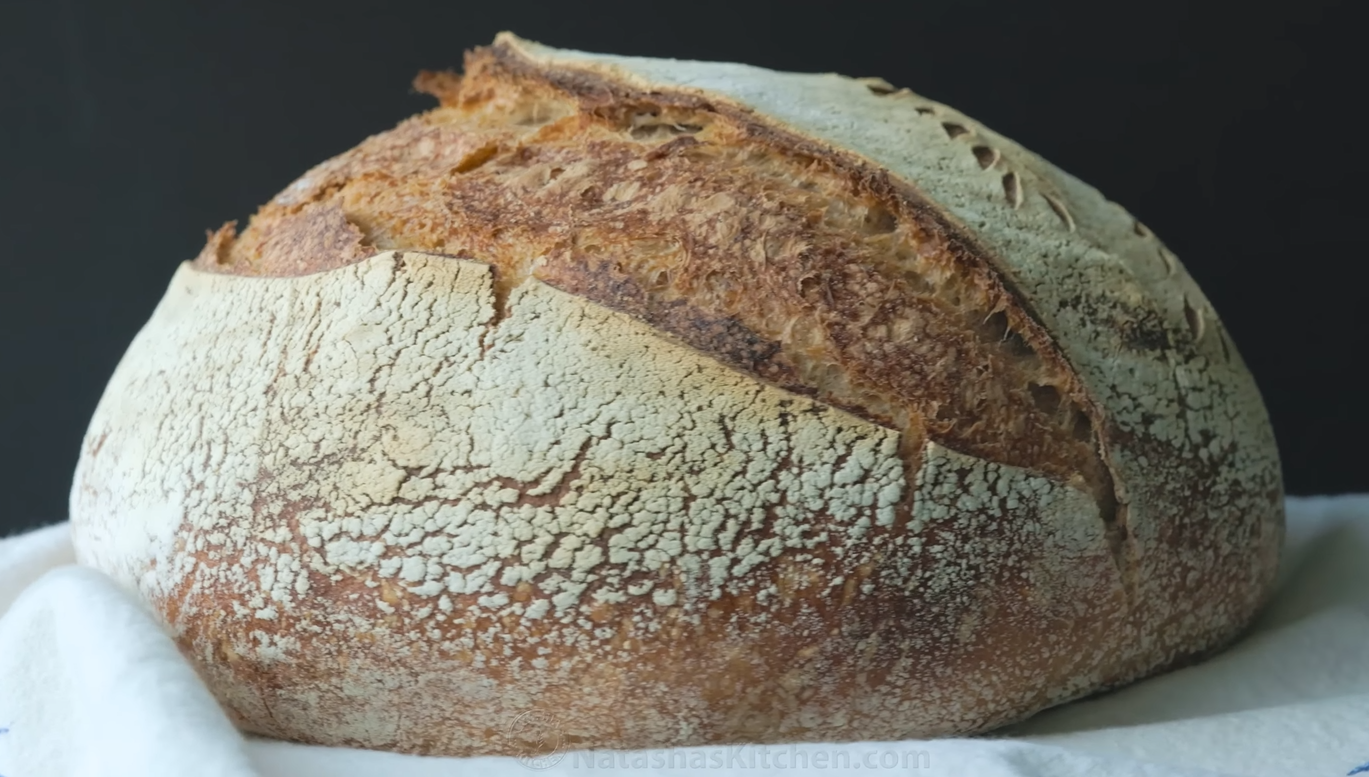Sourdough bread recipe is a time-honored tradition that dates back centuries, cherished for its unique flavor, chewy texture, and natural fermentation process. In recent years, the trend of incorporating vegetables into sourdough bread recipes has gained popularity due to its nutritional benefits and enhanced taste profile.

Table of Contents
ToggleWhat is Sourdough Bread?
History of Sourdough bread recipe:
Sourdough bread traces its origins to ancient civilizations where it served as a staple food. Unlike conventional bread made with commercial yeast, sourdough relies on wild yeast and bacteria present in the environment to ferment the dough, resulting in its characteristic tangy flavor and airy texture.
Basic Ingredients
Traditional sourdough bread typically consists of flour, water, and salt. However, modern variations often include additional ingredients such as vegetables to impart unique flavors and nutritional value.
Nutritional Benefits
Vegetables are rich in essential nutrients, vitamins, and minerals that contribute to overall health and well-being. By adding vegetables to sourdough bread, you can increase its nutritional content, making it a healthier option compared to plain white bread.
Flavor Enhancement
Vegetables add depth and complexity to the flavor profile of sourdough bread. From earthy beetroot to savory pumpkin, the possibilities are endless when it comes to experimenting with different vegetable additions, allowing you to customize the taste according to your preferences.
Choosing the Right Vegetables
When selecting vegetables for your sourdough bread recipe, it’s essential to choose fresh, high-quality produce that complements the overall flavor profile.
Popular Vegetable Choices
Some popular vegetable options for sourdough bread include carrots, spinach, zucchini, and roasted garlic. Experiment with different combinations to discover unique flavor combinations that suit your palate.
Preparing the Vegetable Sourdough Starter
The key to successful veg sourdough bread lies in creating and maintaining a healthy sourdough starter infused with vegetables.
Steps to Create and Maintain a Sourdough Starter
- Begin by mixing equal parts flour and water in a glass jar.
- Add a small amount of grated or pureed vegetables to the mixture and stir well.
- Cover the jar loosely with a clean cloth or lid and let it sit at room temperature for 24-48 hours, allowing the natural fermentation process to occur.
- Feed the starter regularly by discarding half of the mixture and adding fresh flour and water to replenish it.
Veg Sourdough Bread Recipe:

Ingredients:
- 1 cup – vegetable sourdough starter
- 3 cups – bread flour
- 1 ½ cups – water
- 1 teaspoon – salt
- 1 cup – chopped vegetables of your choice
Directions of Sourdough Bread recipe:
- In a large mixing bowl, add flour, salt, and water. Mix until a shaggy dough forms.
- Add the chopped vegetables to the dough and knead gently.
- Cover the bowl with a clean kitchen towel and let the dough ferment at room temperature for 8-12 hours, or until doubled in size.
- Preheat your oven to 450°F (230°C) and place a oven inside to heat up.
- Once the dough has risen, gently shape it into a round loaf and transfer it into baking sheet.
- Score the top of the dough with a sharp knife and transfer it to the preheated Dutch oven or baking stone.
- Bake for 30-40 minutes, or until the bread is golden brown and sounds hollow when tapped on the bottom.
- Remove the bread from the oven and let it cool on a wire rack before slicing and serving.
Tips for Perfect Veg Sourdough Bread
Fermentation Tips
- Maintain a consistent room temperature for optimal fermentation.
- Avoid over-fermenting the dough, as it can lead to a sour or overly tangy flavor.
Baking Techniques
- Use a Dutch oven or baking stone to create steam and achieve a crispy crust.
- Experiment with different vegetable combinations and hydration levels to customize the texture and flavor of your bread.
Health Benefits of Veg Sourdough Bread recipe:
In addition to its delicious taste and texture, veg sourdough bread offers several health benefits.
Digestibility
The natural fermentation process breaks down gluten and phytic acid, making sourdough bread easier to digest for individuals with gluten sensitivities or digestive issues.
Gut Health
The probiotics produced during fermentation promote a healthy gut microbiome, which is essential for optimal digestion and overall well-being.
FAQs about Sourdough bread recipe:
- Can I use frozen vegetables in my sourdough bread recipe?
Yes, you can use frozen vegetables, but make sure to thaw and drain them thoroughly before incorporating them into the dough.
- How long does a sourdough starter infused with vegetables last?
With proper care and feeding, a vegetable sourdough starter can last indefinitely, providing you with endless opportunities to bake delicious bread.
- Can I substitute whole wheat flour for bread flour in the recipe?
Yes, you can substitute whole wheat flour for bread flour, but keep in mind that it may affect the texture and rise of the bread slightly.
- Is sourdough bread suitable for individuals following a vegan diet?
Yes, sourdough bread is inherently vegan-friendly, as it contains no animal products or by-products.
- Can I use the store-bought sourdough starter for this recipe?
While store-bought sourdough starter can be convenient, creating your starter allows you to customize the flavor and tailor it to your preferences.
Watch detailed video for the same:
We have covered Roasted Brussel Sprouts recipe too.

